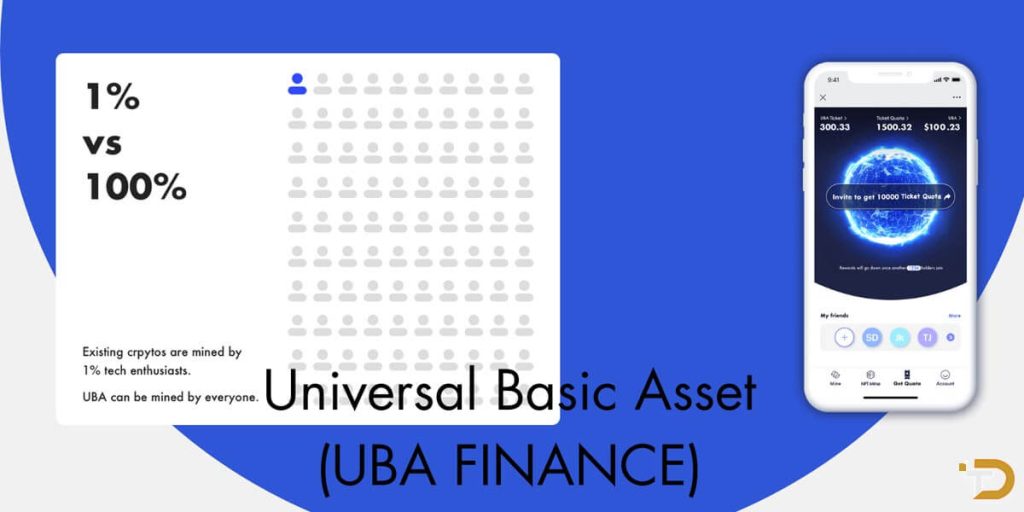Impact of Universal Basic Asset on Advancing Equitable Societies
Universal Basic Asset (UBA) is an innovative concept that aims to provide equal access to fundamental resources and reshape society. By expanding shared commons and recognizing individuals’ rights to natural wealth, UBA addresses inequality concerns equitably and sustainably. This article analyzes UBA‘s principles and components, elucidating its role in tackling poverty and lack of opportunity.
The Philosophy of Universal Basic Asset
UBA is centred around the belief that specific natural and digital resources form part of our shared heritage and should be available to all. It recognizes the need for equitable distribution of wealth generated from shared commons.
As per the UBA Manifesto by the Institute for the Future, access to essential resources like land, water, and air is a fundamental human right. However, private ownership and commercialization have made these inaccessible to many. UBA aims to correct this by expanding the commons through new policies and systems.
Unlike Universal Basic Income (UBI), UBA focuses on access rather than direct cash transfers. It emphasizes providing individuals ownership of – or revenue from – assets that can generate long-term benefits. This empowers communities while promoting sustainable use of resources.
Overall, UBA aims to reduce inequality and enable livelihood stability for all. Fairly distributing natural wealth can help lift segments of society mired in poverty through no fault of their own. This equitable approach is the need of the hour in a rapidly transforming world.
Components of the UBA Framework

The UBA framework is flexible and can be adapted based on local needs. However, some core components that typically form part of UBA-driven initiatives include:
Land & Housing
One of the core components of UBA is allocating land for shelter, agriculture and recreation. Publicly or community-owned land is available to individuals and families for various purposes.
This can significantly improve food security and environmental protection in several ways. By granting land rights, more people access cultivable land to grow crops and feed their families. This reduces hunger and enhances nutrition.
When land is used for housing, it addresses the shortage of affordable accommodations in many regions. With land allotted for recreational activities, communities’ overall health and wellness improve as people enjoy outdoor spaces.
At the same time, allocating land responsibly through UBA frameworks encourages sustainable land use. As individuals gain ownership stakes, they are invested in maintaining soil quality, conserving water resources and protecting biodiversity on the plots. This augments environmental protection efforts.
Natural Resources
Another core idea behind UBA is distributing a portion of income generated from natural resources like water, forests and energy sources to local populations.
When revenues from water utilities, timber harvesting or power generation are shared with citizens of the region, it promotes equitable development. Regular incomes support households and enable better access to healthcare, education and livelihood opportunities.
At the same time, such distributional models under UBA principles promote sustainable resource management. As local communities benefit directly from preserving the commons, they participate actively in conservation and restoration initiatives.
This community-driven approach helps tackle issues like water contamination, deforestation or pollution more effectively than centralized controls alone. Overall, natural capital grows while populations live prosperously.
Intellectual Property
UBA also focuses on recognizing innovation through intellectual property sharing. A percentage of royalties or profits from patents, copyrights and trademarks are channelled back to the community.
This rewards creativity and rewards that fuel novel ideas or works. It encourages continued innovation, knowing it will benefit more people overall.
At the same time, wider dissemination of knowledge accelerates social and economic progress. As communities receive IP dividends, they can invest in schools, healthcare and infrastructure – setting the stage for an upward spiral of growth and wellness.
Overall, UBA presents an alternative model to privatization by expanding the public domain. When combined with modern technologies, it can maximize benefits for society as a whole.
Real-world UBA Initiatives
Several organizations are implementing UBA principles worldwide, demonstrating their effectiveness. Here are some prominent examples:
Fairphone: Fairphone offers sustainably produced modular smartphones and shares profits with cobalt miners in Congo to improve working conditions.
Digital Public Goods: Provides open-source tools and platforms that can be freely used and adapted to meet diverse needs.
EcoCoin: Distributes carbon credits to citizens of CarbonNeutral cities in Canada. Citizens can trade credits or redeem them for green initiatives.
LANDcoin: Piloted in Hawaii, it allocates digital tokens representing land trust to native Hawaiians. Tokens can be exchanged for housing, healthcare and more.
Sustainable Economies Law Center: Advocates for Community Rights and expands the commons through legal and policy frameworks.
These initiatives prove UBA’s versatility and potential to tackle issues like lack of opportunity, environmental degradation and unequal resource-sharing. Their successes inspire emulation of the model worldwide.
UBA in Action: The Case of Universal Basic Asset Finance

Universal Basic Asset Finance (UBA Finance) presents a compelling case study of how UBA principles can be applied digitally. Some key aspects:
Equal Access: Its online mining allows anyone with an internet-enabled device to participate regardless of means or location.
Inclusivity: Mining rewards increase over time, incentivizing continued engagement from diverse demographics.
Sustainability: The capped token supply of 1 billion UBA coins promotes long-term project viability.
Network Effects: Strong user engagement enables quality decentralized applications to be built on the network.
Identity & Privacy: SUBA NFTs serve as verifiable digital identities while preserving user privacy.
Governance: UBA holders can vote on network decisions, giving them ownership stakes.
By harnessing blockchain technologies, UBA Finance provides a model for the equitable distribution of digital resources and assets and their conversion into real-world benefits. Its growing popularity indicates how UBA could reshape the virtual economy.
Prospects and Potential of Universal Basic Asset
UBA is well-positioned to ensure inclusive and sustainable progress as the world transitions to a digital-first future. Some ways it may evolve include:
Digital Land & Housing: Representing physical assets as blockchain-based property tokens for global access.
Carbon Markets: Developing protocols for carbon credit allocation based on individual footprints.
Renewable Energy: Tokenizing energy sources and enabling citizens to trade surplus locally.
Creative Commons: Monetizing freely shared intellectual works through decentralized platforms.
Universal Wallet: Integrating UBA-based assets from multiple initiatives into a single digital portfolio.
Decentralized Governance: Advanced DAO models ensure community participation in decision-making.
By embracing new opportunities, UBA can future-proof societies against threats like rising costs, climate change or technological unemployment. As a framework, it empowers individuals while safeguarding our collective Future.
Read More: Efficient Log Management Strategies for IT Professionals
Conclusion
Universal Basic Asset presents a compelling vision for an equitable, inclusive, and sustainable world. By expanding the commons and recognizing individuals’ fundamental right to natural wealth and resources, UBA addresses the root causes of inequality.
Real-world initiatives demonstrate their effectiveness in tackling issues like poverty, lack of opportunity, environmental degradation and unequal resource-sharing. Utilizing modern technologies, the model can be scaled globally.
UBA is well-positioned to future-proof communities against various challenges through inclusive prosperity. As the philosophy evolves, leveraging new opportunities reshapes our socio-economic systems for the better. UBA represents a pathway towards advancing just, harmonious and thriving societies worldwide.





